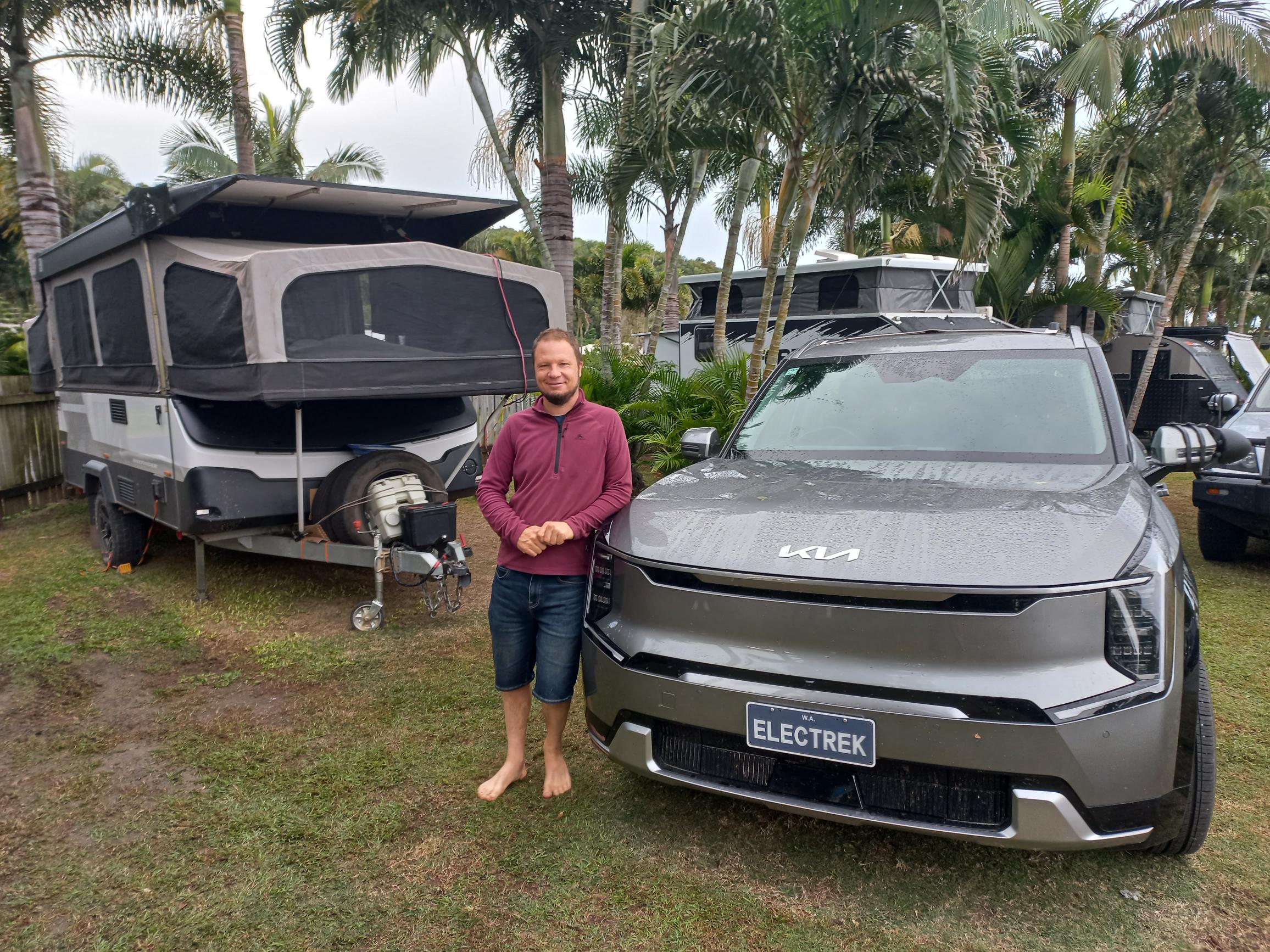Sign up for daily news updates from CleanTechnica on email. Or follow us on Google News!
A practical guide to navigating costs and benefits of installing renewable energy systems at home
Are you a homeowner thinking about installing rooftop solar panels or a battery energy storage system but don’t know where to start? Pacific Northwest National Laboratory (PNNL) researchers are here to help.
Homeowners must navigate a quagmire of complicated policies to determine whether the energy savings from rooftop solar panels or battery energy storage systems (BESS) are worth the high upfront cost.
To help homeowners tackle this tangle of information, PNNL researchers Jessica Kerby and Bethel Tarekegne published an open-access guide to rooftop solar and BESS in Renewable Energy Focus. The team compiled and analyzed utility rates, net metering policies, installation costs, financial incentives and more for both consumers who are interested in installing renewable energy systems and for energy justice and clean energy advocates.
“We want to demystify this process of adding rooftop solar and battery energy storage,” said Kerby, an energy systems engineer at PNNL. “We want to empower people with the understanding of how this complicated system works.”
On a larger scale, the nation is transitioning to a more electrified way of life to reduce its dependency on fossil fuels. But as climate change drives hotter summers and more extreme winter storms, reliable access to power will become more vital to everyday life. Rooftop solar and BESS can provide both energy to homeowners as well as relieve some load on the power grid as a whole.
“We want readers to be able to use this guide to make informed decisions for their family, their household, and their community going forward,” Kerby said.
Kerby broke down some important questions (besides upfront cost) to consider before making any decisions.
Does your utility charge a flat rate for energy use, or does the cost change based on when you use electricity?
Some utilities charge a flat rate for energy use, while others offer a rate that changes based on the time of day. In a Time of Use (TOU) structure, utilities will charge more for electricity during times of high demand and less when demand decreases. In general, peak energy usage occurs in the evenings, while energy use that falls during the middle of the day and overnight is usually mid- or off-peak. In the winter, peak times may occur in both the morning and evening due to the additional electric heating loads.
Kerby notes that the rates for the off-peak times are always lower than the utility’s flat rate, while the on-peak times will be higher, so “that’s a huge opportunity for solar and storage.” A BESS could store energy generated by solar panels during slower hours in the middle of the day, then that energy could be used for evening activities like watching TV, running a dishwasher, or doing the laundry. That way, the homeowner isn’t drawing more expensive energy from the grid.
If the utility charges a flat rate for electricity, including a BESS might not make as much sense because there’s no financial incentive for storing energy. Kerby caveats that homeowners could use battery energy storage as a safety backup if they live in an area with grid reliability issues or one that’s vulnerable to extreme weather events.
Does your state have net metering policies?
Net metering means that the utility purchases excess energy produced by a homeowner’s rooftop solar panels and, in some states, from a BESS as well. If you don’t use all the energy your solar panels produce or that’s stored in your BESS, you can make some money by selling that energy back to the utility. For states with net metering policies, this energy is sold back at the same rate that the household pays for electricity. Electricity rates vary by state and utility, ranging from as low as 8 cents per kilowatt hour (Idaho) to as high as 30 cents per kWh (Hawaii).
“Depending on what state you live in, selling excess electricity production back to the utility could help recover the cost of solar panels and energy storage systems over time,” Kerby said. These policies are evolving, so make sure to review your state’s policy before making any decisions.
In Arizona, California, Colorado, Hawaii, Massachusetts, and New York, net metering also extends to BESS, but the practice is not yet common across the United States, Kerby said.

What kinds of financial incentives are available?
Even with the benefits of rooftop solar and battery energy storage, the upfront cost of these systems is still a barrier to adoption. In some cases, especially for BESS, the time it takes for a homeowner to recoup the cost of the system with energy savings is longer than the lifetime of the technology itself.
Fortunately, homeowners can access some federal and state financial incentives. On a federal level, homeowners can apply for the Investment Tax Credit, which covers 30% of the cost of equipment and installation. However, this credit doesn’t apply to the upfront cost—it’s credited on the homeowner’s taxes based on their tax liability, so it may take multiple years to receive the full credit. Check with the IRS for more information and the full list of requirements to qualify.
At the state level, some states offer property tax exemptions for rooftop solar, which means homeowners would be exempt from paying taxes on the increased value of the home. Several states also offer sales tax exemptions for renewable energy equipment. Some states or utilities may also offer rebates or upfront cash incentives for solar panels or BESS. The Database of State Incentives for Renewables & Efficiency can be used to check for the latest information on these tax policies and financial incentives.
Energy savings possibilities
The PNNL researchers applied all these questions to case studies of hypothetical four-person homes across the United States, including Massachusetts, Colorado, Georgia, Tennessee, and Rhode Island.
Here’s that same analysis applied to the Pacific Northwest, where PNNL is located:
A 7.5 kW rooftop solar system plus a 13.5 kWh BESS would cost $46,322 on average in Washington to install without incentives. The state’s largest utility, Puget Sound Energy (PSE), offers a TOU rate option, meaning prices are higher in the evenings and lower overnight, in the early morning, and on weekends. PSE’s rates also change seasonally, with different peak times and rates in the winter and summer.
An average four-person household with electric heating may use around 23,000 kWh per year, which would cost $3,265, minus monthly service charges, taxes, and fees. The state of Washington also has a net metering policy, meaning that PSE’s TOU rate would also apply to the excess solar production sold back to the utility. With all this in mind, an average four-person household with PSE could save around $1,600 per year (about half their annual utility cost) with this renewable system.
Because Washington has a relatively low average cost of electricity, including a BESS might not be the economical option. Without BESS, the same household could install 10 kW of rooftop solar, which would cost $29,200 and save $1,357 per year.
Without financial incentives, the payback period for the rooftop solar and BESS would be around 28 years, but with the Investment Tax Credit it’s brought down to 20 years. For just the 10 kW solar array, the payback period would be 15 years with the tax incentive and 22 years without. At this time, Washington does not offer incentives for rooftop solar or energy storage installations.
In Oregon, a 7.5 kW rooftop solar system plus a 13.5 kWh BESS would cost $43,125 on average to install without incentives. The state’s largest utility, Portland General Electric (PGE), offers a TOU rate option, and Oregon also has a net metering policy, paying the same utility rate for excess solar production. The same four-person household in Oregon would pay $3,421 before taxes and fees and could save around $1,900 per year in energy bills with this renewable system.
Without BESS, the same household could install 10 kW of rooftop solar, which would cost $28,700 and save $1,567 per year.
PGE and the state of Oregon both offer incentives for rooftop solar and battery energy storage. With the utility, state, and federal incentives, the combined solar and BESS system could be paid back within 11 years. The stand-alone 10 kW solar array could have a payback period as low as 10 years.
Read the new paper to find more case studies for other states. To learn more about policies and incentives across the United States, check out these resources:
This work was funded by the Department of Energy’s Office of Electricity.
Media contact JoAnna Wendel, PNNL
Courtesy of PNNL, Pacific Northwest National Laboratory.
Have a tip for CleanTechnica? Want to advertise? Want to suggest a guest for our CleanTech Talk podcast? Contact us here.
Latest CleanTechnica.TV Video
CleanTechnica uses affiliate links. See our policy here.





